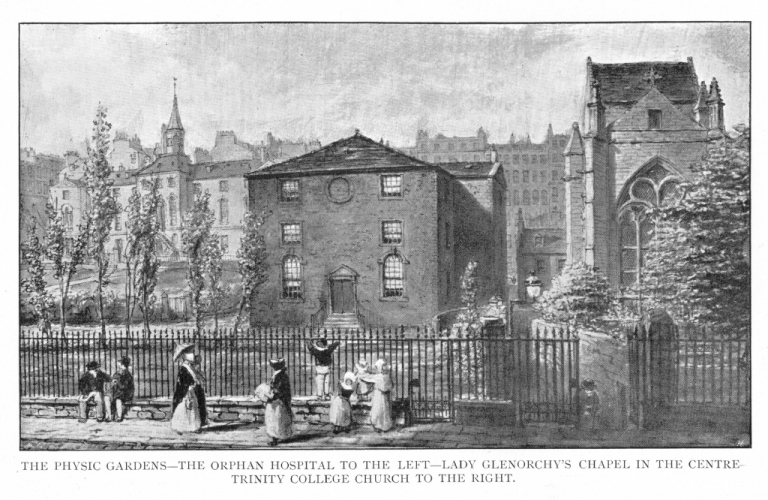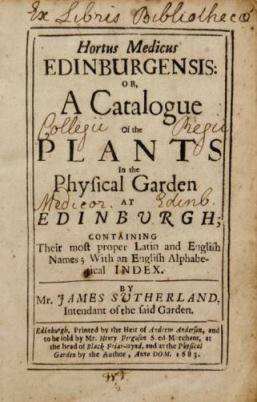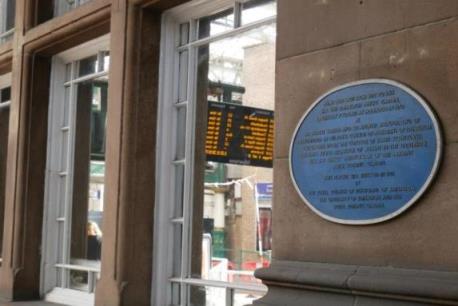When it became obvious in 1676 that the physic garden at Holyrood was too small, Dr Andrew Balfour leased a second garden on grounds belonging to the Trinity Hospital at the so-called Nor’ Loch. This garden, like the garden at Holyrood, flourished under James Sutherland’s care.
Trinity Hospital
By the early 1680s the garden at Trinity Hospital contained over 2000 plants, described by Sutherland in his Hortus Medicus Edinburgensis (1683). In its introduction, it is possible to get a vivid picture not only of the garden itself, but also of Sutherland, who managed to combine self-taught practical horticultural skills with rigorous study and intense curiosity. He deserves much of the credit for making Edinburgh a leading centre for medical botany. His own words are as relevant and inspiring today as they were in 1683:
“… it having been my business these seven years past, wherein I have had the chance to serve the City as intendant over the Garden, to use all care and industry by foreign correspondence to acquire both seeds and plants… Simples that were wanting here, and therefore yearly brought from abroad because of their usefulness in Physick, may now by Industry and Culture to be had in plenty at home.”
He took the unusual decision to not only give the Latin names of plants, but to open up the knowledge to as many people as possible: names are given in Latin and English “that the Catalogue might be the more useful to all persons.”
However, the days of this progressive and idyllic place were numbered. In 1689 the Loch was drained during the Jacobite Risings as siege was laid to Edinburgh Castle. As a result, water flooded the physic garden for days and nearly destroyed it. To compensate, the still existing garden at Holyrood was expanded, but both gardens were finally disbanded by 1763.
The location of this garden, at platform 11 in Edinburgh Waverley Station, is commemorated with a plaque.






